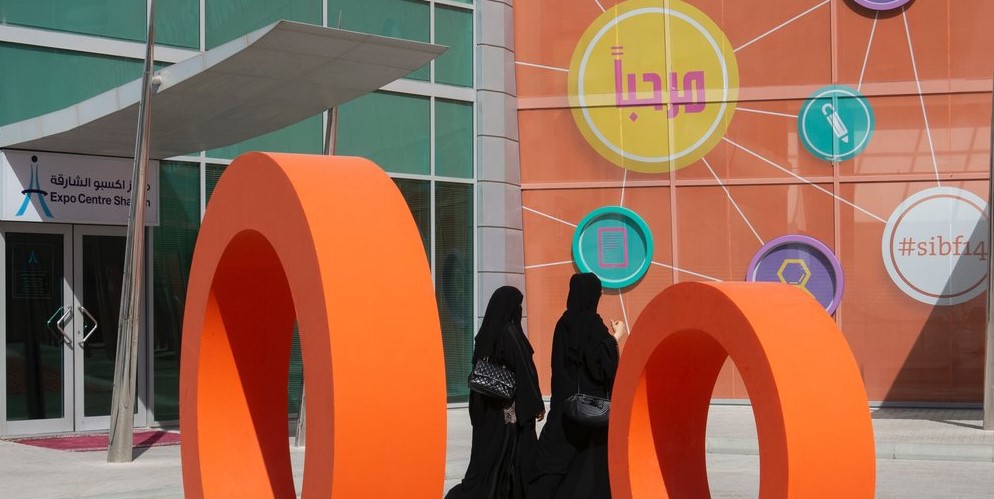Under-representation of GCC women in STEM is compromising regional economic and social development
- Although national education and employment policies have aimed to raise female interest and participation in technical and vocational fields, women continue to shun STEM sectors
- Why, with so much effort directed at attracting women to STEM fields, are the results so dismal and what should be done?
GCC nations face similar challenges in transitioning towards knowledge-based economies — they remain heavily dependent on natural resources, employ large numbers of nationals in the public sector, and rely on foreign workers to fill the private sector. While demand for technically trained labor in the GCC countries is very high, traditionally much of this demand has been filled by foreign labor.
We helped develop meaningful policy reforms to empower women.
Learn more about our Public Sector Strategy and Execution here.
However, further public sector employment generation aimed at absorbing growing national populations may strain national budgets by increasing already high government wage bills. For this reason, GCC governments are gradually restructuring national technical vocational education and training (TVET) systems in concert with introducing labor market reforms to reorient national employment towards the private sector and in-demand STEM fields associated with knowledge-based economic development ambitions.
Although the labor force participation of GCC females remains among the lowest in the world, there is potential to attract highly educated women into high growth STEM fields.
GCC nations are particularly struggling with increasing the enrollment and employment of women in STEM fields. While some GCC countries, such as Saudi Arabia and Bahrain, have viewed TVET as a key element of educational policy for many years, other GCC nations have only relatively recently focused their attention on improving TVET systems. Educational reforms have been accompanied by social and labor market policies aimed at directing women towards emerging STEM fields.
However, the success of females in accessing higher education, in which females now make up the majority of enrollments in nearly all of the GCC countries, to some degree has masked the emerging regional challenge of attracting women to STEM programs and their subsequent labor market entry into emerging high skill, knowledge-intensive, STEM fields.
Given their high levels of education, women are a substantial underutilized resource for GCC economies. Several international studies have shown increased female labor market participation has a large, positive, and significant impact on economic growth and social development.
Although labor force participation amongst GCC females remains amongst the lowest in the world, there is potential to attract highly educated females into the labor market and high growth STEM fields in particular. A challenge in the GCC countries is that many of the emerging industries which have fueled recent growth and job creation, including construction, wholesale and retail trade, transportation, financial services, petrochemicals, and the extractive sectors, are fields which are dominated by males and which tend to employ large quantities of low wage, foreign workers.
Female labor market participation rates in the GCC significantly lag the OECD average and, in some cases, are among the lowest in the world
| Country | Labor Market Participation Male Nationals (%) |
Labor Market Participation Female Nationals (%) |
|---|---|---|
| Bahrain | 68% | 33% |
| Kuwait | 61% | 30% |
| Oman* | 45% | 20% |
| Qatar | 65% | 35% |
| Saudi Arabia | 63% | 16% |
| United Arab Emirates | 58% | 20% |
| OECD Average | 69% | 51% |
Source: National Statistical Agencies of Bahrain, Kuwait, Oman, Qatar, Saudi Arabia, and the UAE
Notes: * Based on working population age 20 to 60 with the remaining participation rates based on the working age population age 15 to 65.
In recognition of the potentially powerful addition that women can play in regional economies, GCC governments have set ambitious goals to expand the number of women enrolled in TVET programs and working in STEM fields.
However, women are still much less likely to study STEM fields, and, when they enter employment, they tend to be concentrated in fields that are inconsistent with national economic ambitions for transitioning to diversified, knowledge economies. While much previous research that has focused on gender-based inequalities in education in the GCC has examined why men are less likely to continue on to higher education, there is significantly less research that has examined why females in GCC nations tend to shun STEM education and employment.
Why So Few? Barriers to Engaging GCC Women in STEM Education
Cultural ideas about what is appropriate work for women specifically limit opportunities to study STEM fields. In many GCC countries, women need support from family members to pursue higher education or work outside the home. Women are often directed by family members away from pursuing STEM programs, despite their interest or aptitude, due to ingrained cultural ideas about appropriate educational pathways and career tracks for women.
While female role models can provide aspirational examples for women’s education and employment decisions that might challenge existing cultural ideas, there are very few female role models presently who received TVET training and are employed in a STEM industry who might positively influence females. The lack of female faculty available to teach TVET programs in the GCC may also implicitly send the message that STEM fields are either not appropriate career choices for females or that women are less successful in STEM fields. A growing body of evidence also suggests that educational curricula in the GCC may contain implicit biases that portray women in administrative rather than STEM positions which socializes women to occupy different social and economic roles than males from very young ages.
The secondary level is a crucial transitional period for young people in the GCC – whether they will transition to the labor market after graduation or continue on to university is largely decided by what they study in secondary school and how they perform.
However, educational policies that sort students based on grades tend to reinforce existing notions that academic tracks are superior to vocational pathways. By not offering secondary TVET options to girls, the structure of academic pathways in GCC countries also contribute to female preferences for non-STEM programs. For this reason, female enrollment in secondary TVET has remained significantly lower than males across the GCC. While career guidance is one informational resource that can help girls consider broader education and employment paths, career guidance is often focused on coaching students towards non-STEM higher education fields.
Higher admissions standards for academic programs than some technical fields feed perceptions that particular academic tracks carry higher social prestige. While GCC nations have launched ambitious sponsorship and scholarship programs, many of these programs perpetuate gender-biased labor market segmentation by incenting women to study fields such as clerical and administrative work over STEM fields.
While socio-cultural factors and parental influence play a role in students’ choices of major, GCC higher education policies can serve to limit female students’ options for study.
At the higher education level, enrollment statistics show that women tend to pursue concentrations such as nursing, education, arts, and social sciences, rather than technical or scientific fields. Particularly in emerging STEM fields, many GCC nations suffer from inexplicit licensing and accreditation standards and unclear quality procedures. While formal channels of licensing and accreditation are generally covered by national ministries of education, nationwide quality bodies, or specific TVET regulatory bodies, regulatory gaps exist in TVET systems. For instance, in many countries, private institutions are not adequately regulated. The lack of clear standards for licensing and accreditation undermines public quality perceptions of TVET providers. To improve quality and align curricular standards to international norms, many countries have instituted accreditation reforms. However, the number of institutions involved in licensing and accreditation can often lead to overlapping authorities and complex regulatory environments that confuse potential students and parents regarding the value and employment opportunities associated with particular qualifications.
Female public university enrollment patterns in the GCC show strong concentration of females in arts and sciences, education, and business rather than STEM fields critical to knowledge-based economic development.
| Kuwait | UAE | Qatar | |
| Major | % of total female students enrolled | % of total female students enrolled | % of total female students enrolled |
| Arts and Sciences | 28% | 19% | 48% |
| Education | 27% | 3% | 4% |
| Business and Economics | 15% | 11% | 23% |
| Law | 9% | 3% | 6% |
| Food and Agriculture | 0% | 3% | Data not available |
| Engineering | 17% | 7% | 15% |
| Medicine and Health Sciences | 3% | 2% | 4% |
| Information Technology | Data not available | 2% | Data not available |
Source: National Statistical Agencies of Kuwait, UAE, and Qatar
Note: Data is presented only for countries which have publicly available statistics
What Holds Women Back? Barriers to GCC Female Employment in STEM Fields
A significant body of regional research has found that socio-cultural beliefs about female employment encourage women to pursue professional and administrative positions in the public sector. Jobs that do not fit this cultural ideal are more likely to be deemed inappropriate for females. Broadly speaking, professional and administrative positions in the public sector are considered more prestigious in Gulf countries, which means that women interested in STEM fields will likely be exposed to negative social pressure to avoid such professions in favor of more culturally acceptable roles in the public sector and state owned companies.
In addition to generally being confined to employment in only a handful of select industries, women are also much less likely to work in senior management positions. In some GCC countries, occupational segregation puts specific demands on employers which are often unwilling or unable to provide separate facilities for females. Due to the prevalence of small-and-medium sized business in the GCC, many employers are lack the resources to provide the facilities required by occupational segregation.
Gender segregation can perpetuate labor market segmentation by decreasing the number of jobs available to women in emerging economic sectors.
Women also encounter difficulties finding employment due to structural labor market features which limit the fields they can enter. While the general direction of knowledge-based economic development is articulated in national level strategic documents in many Arab countries, such documents are less precise about the particular occupations within knowledge-based fields that may emerge as economies develop. In many cases, the rapidly emerging GCC industrial structure and economic planning limitations result in lack of labor market demand signals that lead to widespread skills shortages and gaps in GCC labor markets. In most GCC countries, the extractive industries remain the major economic sector. However, the extractive industries tend to be heavily male-dominated fields that attract few women. High percentages of foreign males in the private sector labor force also encourage women to seek more culturally and socially acceptable employment in fields with more women or those in gender-segregated environments.
Across the GCC, females are generally employed in the public sector.
The attractiveness of public sector employment is a primary factor behind women’s unwillingness to work in STEM fields. Jobs in the public sector are relatively well paid, not physically demanding, and provide substantial benefits over the private sector. The high concentration of females in the public sector makes it more difficult for females to enter the private sector and more diverse STEM fields because high levels of clustering reinforce social views that the public sector is the only appropriate employer for females.
Emerging research also suggest that women face much more significant challenges securing employment than men which makes them seek the job security of the public sector. Women have more difficulty finding their first job in the GCC, and studies have shown that women generally use very few non-government facilitated methods for finding employment. The difficulty women experience transitioning to the labor market and between jobs make them more likely to become discouraged and voluntarily remove themselves from the labor market or retain jobs in the public sector.
| Country | % of Female Nationals Employed in the Public Sector | % of Female Nationals Employed in the Private Sector |
|---|---|---|
| Bahrain | 50% | 50% |
| Kuwait* | 94% | 6% |
| Oman | 65% | 35% |
| Qatar | 88% | 12% |
| Saudi Arabia | 63% | 37% |
| UAE | 89% | 11% |
Sources: National Statistical Agencies of Bahrain, Kuwait, Oman, Qatar, Saudi Arabia, and UAE
Note: * Some studies suggests that in 2010 79% of females now work in the public sector. However, a definitive publicly available data source is not available
What GCC Countries Can Do
Progress towards increasing female enrollment and employment in STEM fields will need to target a variety of national education and training system, labor markets, and individual challenges.
Overcoming Policy, Planning, and Systemic Challenges to Equitable TVET Provision
In order to supply qualitatively and quantitatively sufficient levels of technically trained females to the labor market, national education and training systems must provide females with accessible technical pathways that are responsive to evolving socio-cultural norms concerning female labor market participation and employment in technical fields. Females’ access to STEM fields in many of the GCC countries is limited in part due to few providers who specifically serve women and government and institutional decisions to offer select programs to women that fail to fully cover STEM fields of importance to emerging knowledge-based industries in the region.
Across the GCC, some STEM options are not open to women.
These include many advanced engineering sub-disciplines critical to regional development. Addressing the supply of TVET programs means not only increasing the number of options available to women but also ensuring that institutions are female-friendly and offer high quality programs attractive to females.
Increasing Female Enrollment in STEM Programs
While many females from GCC countries are studying in TVET programs at the post-secondary level, several studies across the region have found that some STEM fields are viewed as a second-best option. To increase the number of females studying in STEM programs at the secondary and tertiary levels, GCC countries will have to institute reforms that increase demand for technical and vocational education by addressing socio-cultural barriers to enrollment. Addressing these barriers will involve interventions and policies that positively influence persistent beliefs about the kinds of students who attend TVET and the post-graduation opportunities available to them.
Reforms must center on information and reputation management that increase women’s access to information about STEM education, encourages women to enter STEM fields, and improves the perceived status of STEM education.
Encouraging Women to Enter Employment in STEM Fields
Ease of entry, effective labor market and social policies, and female-friendly workplaces are critical to attracting outgoing technically trained females from national education and training systems to employment in STEM fields. As with the decision to enroll in technical programs, encouraging women to work in technical fields requires incentivizing and providing information to women to motivate particular labor market choices. Barriers to female employment are varied and include such issues as family responsibilities, female preferences for certain work environments, and expectations about what types of jobs offer the best pay and benefits. Effective reforms will likely involve structural labor market policies that make technical positions and private sector employment more desirable options.
Increasing Employer Demand for Technically Trained Females
Increasing female employment rates in technical fields will require increasing employers’ demand for female labor in a way that overcomes existing preferences for public sector employment. The focus must be on encouraging private sector companies to hire females. Companies must be convinced of the desirability of hiring females despite some employers in the region viewing females as more expensive and requiring special accommodations.
In several GCC countries policy experiments with training and wage subsidy programs have proven effective in incentivizing companies to hire more women.



















































